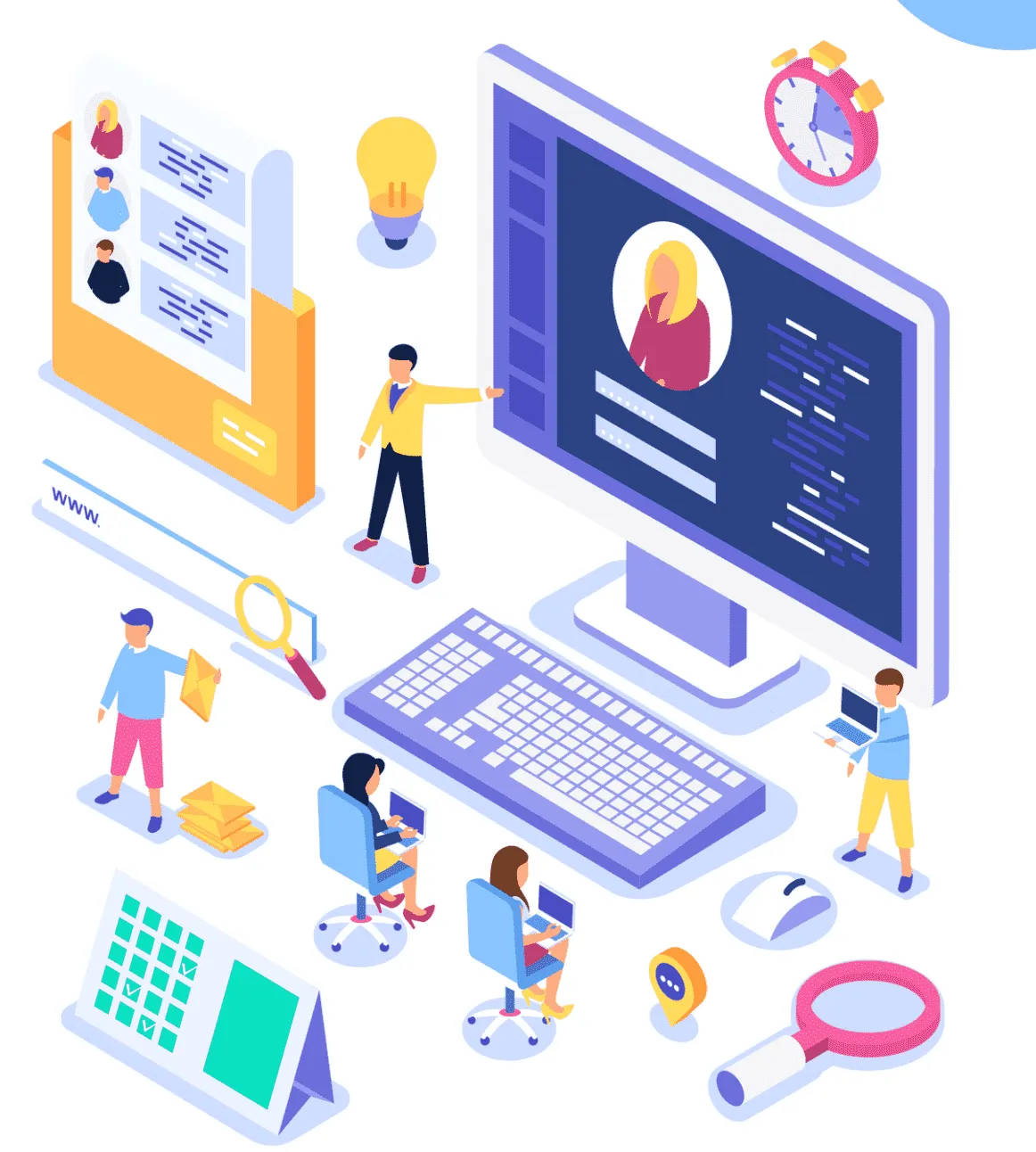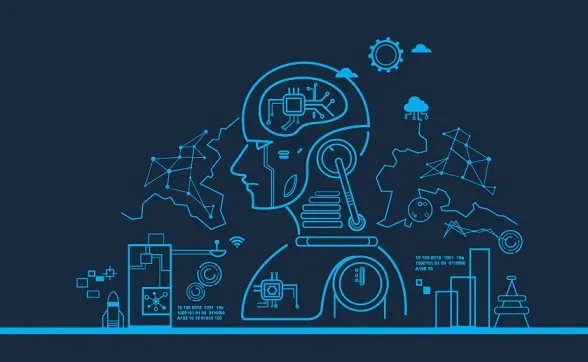If you have been following banking, investing, or cryptocurrency over the last ten years, you may have heard the term “blockchain,” the record-keeping technology behind the Bitcoin network.
Understanding Blockchain Technology: What It Is and How It Works
Blockchain seems complicated, and it definitely can be, but its core concept is quite simple. A blockchain is a type of database. To be able to understand blockchain helps to first understand what a database is.
A database is a collection of information that is stored electronically on a computer system. Information, or data, in databases is typically structured in table format to allow for easier searching and filtering for specific information. What is the difference between someone using a spreadsheet to store information rather than a database?
Spreadsheets are designed for one person, or a small group of people, to store and access limited amounts of information. In contrast, a database is designed to house significantly larger amounts of information that can be accessed, filtered, and manipulated quickly and easily by any number of users at once.
Large databases achieve this by housing data on servers that are made of powerful computers. These servers can sometimes be built using hundreds or thousands of computers to have the computational power and storage capacity necessary for many users to access the database simultaneously. While a spreadsheet or database may be accessible to any number of people, it is often owned by a business and managed by an appointed individual that has complete control over how it works and the data within it.
How does Blockchain work?
Blockchain consists of three important concepts: blocks, nodes, and miners.
Blocks
Every chain consists of multiple blocks and each block has three basic elements:
- The data in the block.
- A 32-bit whole number is called a nonce. The nonce is randomly generated when a block is created, which then generates a block header hash.
- The hash is a 256-bit number wedded to the nonce. It must start with a huge number of zeroes (i.e., be extremely small).
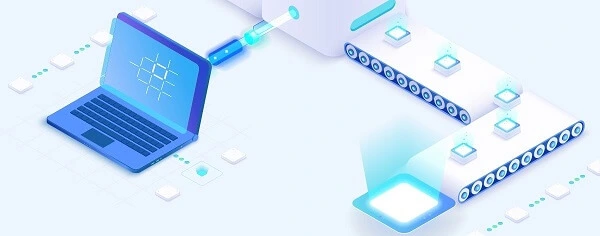
When the first block of a chain is created, a nonce generates the cryptographic hash. The data in the block is considered signed and forever tied to the nonce and hash unless it is mined.
Miners
Miners create new blocks on the chain through a process called mining.
In a blockchain every block has its unique nonce and hash, but also references the hash of the previous block in the chain, so mining a block isn't easy, especially on large chains.
Miners use special software to solve the incredibly complex math problem of finding a nonce that generates an accepted hash. Because the nonce is only 32 bits and the hash is 256, there are roughly four billion possible nonce-hash combinations that must be mined before the right one is found. When that happens, miners are said to have found the "golden nonce" and their block is added to the chain.
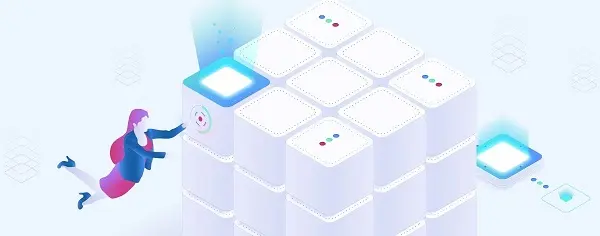
Making a change to any block earlier in the chain requires re-mining not just the block with the change, but all the blocks that come after. Therefore, it's extremely difficult to manipulate blockchain technology. Think of it is as "safety in math" since finding golden nonce requires an enormous amount of time and computing power.
When a block is successfully mined, the change is accepted by all the nodes on the network and the miner is rewarded financially.
Nodes
One of the most important concepts in blockchain technology is decentralization. No one computer or organization can own the chain. Instead, it is a distributed ledger via the nodes connected to the chain. Nodes can be any kind of electronic device that maintains copies of the blockchain and keeps the network functioning.
Every node has its copy of the blockchain, and the network must algorithmically approve any newly mined block for the chain to be updated, trusted, and verified. Since blockchains are transparent, every action in the ledger can be easily checked and viewed. Each participant is given a unique alphanumeric identification number that shows their transactions.
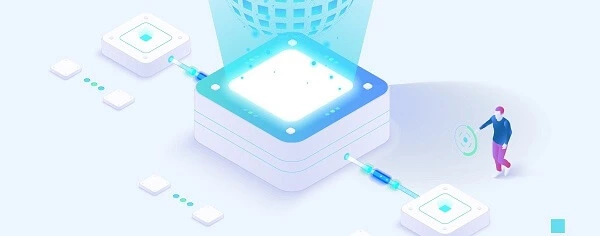
Combining public information with a system of checks and balances helps the blockchain maintain the integrity and creates trust among users. Essentially, blockchains can be thought of as the scalability of trust via technology.
Types of Blockchains
There are four types of blockchains:
- Public blockchain: Public blockchains are open, decentralized networks of computers accessible to anyone wanting to request or validate a transaction (check for accuracy).
- Private blockchain: A blockchain network that works in a restrictive environment like a closed network, or that is under the control of a single entity, is a private blockchain.
- Hybrid blockchain: Sometimes, organizations will want the best of both worlds, and they'll use hybrid blockchain, a type of blockchain technology that combines elements of both private and public blockchain
- Consortium blockchain: The fourth type of blockchain, consortium blockchain, also known as a federated blockchain, is similar to a hybrid blockchain in that it has private and public blockchain features. But it's different in that multiple organizational members collaborate on a decentralized network
Key Elements of Blockchain
A blockchain is essentially a digital ledger of transactions that is duplicated and distributed across the entire network of computer systems on the blockchain. Each block in the chain contains several transactions, and every time a new transaction occurs on the blockchain, a record of that transaction is added to every participant’s ledger. The decentralized database managed by multiple participants is known as Distributed Ledger Technology (DLT).
Blockchain is a type of DLT in which transactions are recorded with an immutable cryptographic signature called a hash.
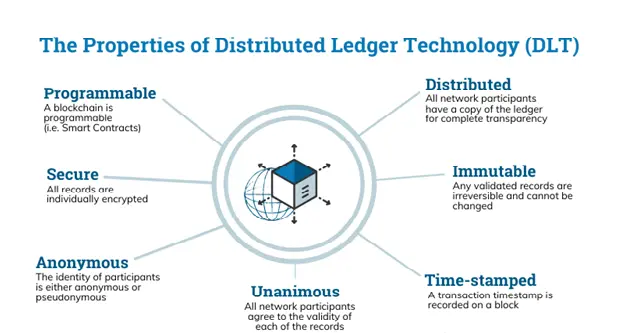
This means if one block in one chain was changed, it would be immediately apparent it had been tampered with. If hackers wanted to corrupt a blockchain system, they would have to change every block in the chain, across all the distributed versions of the chain.
Blockchains such as Bitcoin and Ethereum are constantly and continually growing as blocks are being added to the chain, which significantly adds to the security of the ledger.
Uses of blockchain
As we now know, blocks on Bitcoin’s blockchain store data about monetary transactions. But it turns out that blockchain is a reliable way of storing data about other types of transactions, as well.
Some companies that have already incorporated blockchain include Walmart, Pfizer, AIG, Siemens, Unilever, and a host of others. For example, IBM has created its Food Trust blockchain to trace the journey that food products take to get to their locations.
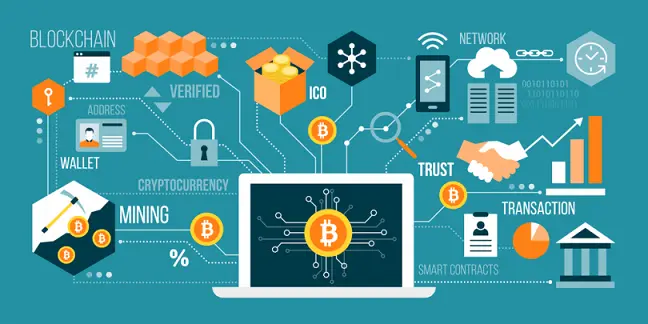
Why do this? The food industry has seen countless outbreaks of e Coli, salmonella, listeria, as well as hazardous materials being accidentally introduced to foods. In the past, it has taken weeks to find the source of these outbreaks or the cause of sickness from what people are eating.
Using blockchain gives brands the ability to track a food product’s route from its origin, through each stop it makes, and finally, its delivery. If a food is found to be contaminated, then it can be traced back through each stop to its origin. Not only that, but these companies can also now see everything else they may have come in contact with, allowing the identification of the problem to occur far sooner, potentially saving lives. This is one example of blockchains in practice, but there are many other forms of blockchain implementation.
1. Banking and Finance
Perhaps no industry stands to benefit from integrating blockchain into its business operations more than banking. Financial institutions only operate during business hours, five days a week. That means if you try to deposit a check on Friday at 6 p.m., you will likely have to wait until Monday morning to see that money hit your account. Even if you do make your deposit during business hours, the transaction can still take one to three days to verify due to the sheer volume of transactions that banks need to settle. Blockchain, on the other hand, never sleeps.
By integrating blockchain into banks, consumers can see their transactions processed in as little as 10 minutes, basically the time it takes to add a block to the blockchain, regardless of holidays or the time of day or week. With blockchain, banks also have the opportunity to exchange funds between institutions more quickly and securely. In the stock trading business, for example, the settlement and clearing process can take up to three days (or longer, if trading internationally), meaning that the money and shares are frozen for that period.
Given the size of the sums involved, even the few days that the money is in transit can carry significant costs and risks for banks. European bank Santander and its research partners put the potential savings at $15 billion to $20 billion a year. Capgemini, a French consultancy, estimates that consumers could save up to $16 billion in banking and insurance fees each year through blockchain-based applications.
2. Currency
Blockchain forms the bedrock for cryptocurrencies like Bitcoin. The U.S. dollar is controlled by the Federal Reserve. Under this central authority system, a user’s data and currency are technically at the whim of their bank or government. If a user’s bank is hacked, the client’s private information is at risk. If the client’s bank collapses or they live in a country with an unstable government, the value of their currency may be at risk. In 2008, some of the banks that ran out of money were bailed out partially using taxpayer money. These are the worries out of which Bitcoin was first conceived and developed.
By spreading its operations across a network of computers, blockchain allows Bitcoin and other cryptocurrencies to operate without the need for a central authority. This not only reduces risk but also eliminates many of the processing and transaction fees. It can also give those in countries with unstable currencies or financial infrastructures a more stable currency with more applications and a wider network of individuals and institutions they can do business with, both domestically and internationally.
Using cryptocurrency wallets for savings accounts or as a means of payment is especially profound for those who have no state identification. Some countries may be war-torn or have governments that lack any real infrastructure to provide identification. Citizens of such countries may not have access to savings or brokerage accounts and therefore, no way to safely store wealth.
3. Healthcare
Health care providers can leverage blockchain to securely store their patients’ medical records. When a medical record is generated and signed, it can be written into the blockchain, which provides patients with the proof and confidence that the record cannot be changed. These personal health records could be encoded and stored on the blockchain with a private key, so that they are only accessible by certain individuals, thereby ensuring privacy.
The good news is the medical sector has already been moving away from paper for recordkeeping purposes for years. However, blockchain offers even more safety and convenience. In addition to storing patient records, the patient, who possesses the key to access these digital records, would be in control of who gains access to that data. It would be a means of strengthening the HIPAA laws that are designed to protect patient privacy.
4. Real estate, land, and auto title transfers
If you have ever spent time in your local Recorder’s Office, you will know that the process of recording property rights is both burdensome and inefficient. Today, a physical deed must be delivered to a government employee at the local recording office, where it is manually entered into the county’s central database and public index. In the case of a property dispute, claims to the property must be reconciled with the public index.
This process is not just costly and time-consuming—it is also riddled with human error, where each inaccuracy makes tracking property ownership less efficient. Blockchain has the potential to eliminate the need for scanning documents and tracking down physical files in a local recording office. If property ownership is stored and verified on the blockchain, owners can trust that their deed is accurate and permanently recorded.
In war-torn countries or areas that have little to no government or financial infrastructure, and certainly no “Recorder’s Office,” it can be nearly impossible to prove ownership of a property. If a group of people living in such an area can leverage blockchain, transparent and clear timelines of property owners could be established.
This would eliminate the fees and processes typically associated with the use of a notary, third-party mediator, or attorneys.
5. Monitor Supply Chains
As in the IBM Food Trust example, suppliers can use blockchain to record the origins of materials that they have purchased. This would allow companies to verify the authenticity of their products, along with such common labels as “Organic,” “Local,” and “Fair Trade.”
As reported by Forbes, the food industry is increasingly adopting the use of blockchain to track the path and safety of food throughout the farm-to-user journey.
Blockchain also comes in particularly handy when it comes to monitoring supply chains. By removing paper-based trails, businesses should be able to pinpoint inefficiencies within their supply chains quickly, as well as locate items in real time. Further, blockchain would allow businesses, and possibly even consumers, to view how products performed from a quality-control perspective as they traveled from their place of origin to the retailer.
6. Digital Voting
As mentioned, blockchain could be used to facilitate a modern voting system. Voting with blockchain carries the potential to eliminate election fraud and boost voter turnout, as was tested in the November 2018 midterm elections in West Virginia. Using blockchain in this way would make votes nearly impossible to tamper with. The blockchain protocol would also maintain transparency in the electoral process, reducing the personnel needed to conduct an election and providing officials with nearly instant results. This would eliminate the need for recounts or any real concern that fraud might threaten the election.
7. Smart Contracts
A smart contract is a computer code that can be built into the blockchain to facilitate, verify, or negotiate a contract agreement. Smart contracts operate under a set of conditions that users agree to. When those conditions are met, the terms of the agreement are automatically carried out.
Say, for example, a potential tenant would like to lease an apartment using a smart contract. The landlord agrees to give the tenant the door code to the apartment as soon as the tenant pays the security deposit. Both the tenant and the landlord would send their respective portions of the deal to the smart contract, which would hold onto and automatically exchange the door code for the security deposit on the date the lease begins. If the landlord doesn’t supply the door code by the lease date, the smart contract refunds the security deposit. This would eliminate the fees and processes typically associated with the use of a notary, third-party mediator, or attorneys.
8. Equity trading
At some point, blockchain could rival or replace current equity trading platforms to buy or sell stocks. Because blockchain networks validate and settle transactions so quickly, it could eliminate the multiday wait time investors encounter when selling stock(s) and seeking access to their funds for the purpose of reinvestment or withdrawal.
9. Tax regulation and compliance
Have I mentioned how important transparency and immutability are yet? For example, marijuana companies can use blockchain as a means to record their sales and demonstrate to lawmakers that they're abiding by local, state, and/or federal laws. More importantly, these sales act as a clear record for the IRS that they've paid their fair share of taxes to the federal government, assuming they're profitable.
10. Managing Internet of Things networks
Networking giant Cisco Systems may be behind a blockchain-based application that would monitor Internet of Things (IoT) networks. The IoT describes wirelessly connected devices that can send and receive data. Such an application could determine the trustworthiness of devices on a network -- and continuously do so for devices entering and leaving the network, such as smart cars or smartphones.
What's Next for Blockchain?
First proposed as a research project in 1991, blockchain is comfortably settling into its late twenties. Like most millennials its age, blockchain has seen its fair share of public scrutiny over the last two decades, with businesses around the world speculating about what the technology is capable of and where it’s headed in the years to come.
With many practical applications for the technology already being implemented and explored, blockchain is finally making a name for itself at age twenty-seven, in no small part because of bitcoin and cryptocurrency. As a buzzword on the tongue of every investor in the nation, blockchain stands to make business and government operations more accurate, efficient, secure, and cheap with fewer middlemen.
As we prepare to head into the third decade of blockchain, it’s no longer a question of "if" legacy companies will catch on to the technology—it's a question of "when."
Read more blogs here

